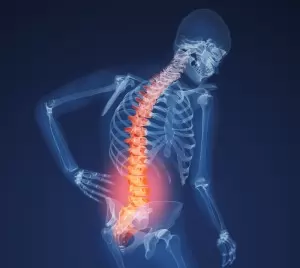Too many people suffer from low back pain daily. It has been listed as the #1 reason people see a doctor in America. The question is, if so many people are suffering from low back pain and stiffness, then why do we continue to use the same old tools to solve the problem? Can we not see that none of these are working? I heard the definition of insanity was to keep doing the same thing over and over hoping for a different outcome. I hope that is none of you.
I ran across an article the other day about the hip flexors and how they can contribute to back pain. I liked the article for the pictures and the writer’s explanation of how the muscles work. I did not totally agree with his method of solving it. Too many of his solutions were part of the same old solutions of the past. Anyway, the pictures are very descriptive and will give you a great visual of what is going on with the hip muscles and how they affect the pelvis and hip joint. You can see the article Here.
Most back pain will come from the hip flexors, and there are three of them, Psoas, Sartorius, and Gracilis, although the Psoas gets most of the attention. Throw in the Rectus Femoris, one of the quad muscles on the front of the thigh and you are in for trouble. This group of muscles can get tight from sitting for long periods of time, bending over and pulling on objects like weeds or books, sleeping in a fetal position, or anything else that requires us to bend forward. Since most of what we do is in front of us so we need to bend forward, we are all destined to feel back pain or stiffness at some point in our lives.
People who can bend down and touch their toes without bending their knees are the most perplexed when they feel back pain. They believe they are stretching their back out, and they are correct. The problem is, the back is not the problem. Their back IS stretched. Their hamstrings are stretched, but the hip flexors in front of the hip and quads on the front of the thighs are not. When they stand up, the back muscles must pull hard to elongate the hip flexors and quads in order for the body to stand erect.
In a short period of time, the back muscles will spasm due to overwork and the pain becomes too much. Some people will take pain pills, wear a back brace, and even get injections in their back to stop the pain. Again, the problem is on the front side, not the back side, even though the pain is on the back side.
Below, I will add the hip flexor and quad stretch videos for you to follow along. I would do these stretches every day, twice a day, morning and evening. The key here is to remember you are pulling these muscles apart. Breathe out as you gently stretch the muscle so your brain can relax and release the muscle. Once the brain perceives there is no danger, the muscle will release and the pain will stop. If you pull too hard, your brain will think someone is attacking the body and that someone is you. At this point, you are strength training, not stretching. Take your time, relax, and allow the brain to release the muscles to stop your pain.


